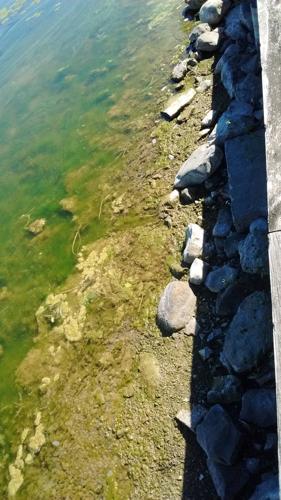Blue-green algae toxins making their way into the city of Auburn and town of Owasco's treated drinking water has some pet owners concerned. With the U.S. Environmental Protection Agency's health advisory levels for children under the age of 6 at 0.3 micrograms per liter, some are wondering — what does that mean for their hairy (or furry) kids?
A couple of local veterinarians have said while there are no specific guidelines for pets consumption of microcystin, the toxin that can be released by dying blue-green algae blooms, the levels found in the treated drinking water do not concern them as much as the levels that are at times found in Owasco Lake after a harmful algal bloom.
Karyn Bischoff, a diagnostic veterinary toxicologist at Cornell University, said that if the water meets EPA's regulations, she would not expect it to cause any problems in pets or livestock. So far the Cayuga County Health Department has reported toxin levels in the treated water to be low and thus not a public health concern, ranging from not detectable to 0.21 micrograms per liter.
People are also reading…
Blue-green algae, also known as cyanobacteria, is a filmy, paint-like scum that has been dis…
That being said, Dale Ottosen, veterinarian with Cayuga Veterinary Services on Clark Street Road in Auburn said while the toxic dose of microcystin is unknown for dogs and cats, he said the toxic dose is small.
"Knowing that the amount needed to cause toxicosis is minute, our advice has been that if people are uncomfortable drinking the water or allowing their children to do so, they are well advised to also provide bottled water to their pets," Ottosen wrote in an email to ČËĘŢĐÔ˝».
Cayuga Veterinary Services has had no cases of toxicosis, or poisoning, he added, related to blue-green algae in pets at the practice.
Weedsport Animal Hospital said it has had one client whose dog was having stomach issues. After switching to bottled water, the owner said her dog was doing better. But the hospital said they are not advising either way on the tap water, telling clients to play it by ear and see how their pets are doing.
Bischoff, who works more with animals who have been exposed to blue-green algae accidentally in ponds, said that immersive exposure is where she's seen the most damage. She said she's most concerned when dogs are swimming in and drinking blue-green algae toxins. The toxins attack the dog's liver cells, blood pools in the liver, and the animal can die within hours if not washed off and given immediate medical attention.Â
"The best, most life-saving step is to keep your animals on a leash and away from those situations," she said.
The county Health Department has said people should contact their vet if their animals experience symptoms such as diarrhea, nausea, vomiting, irritation of the skin, eyes or respiratory system. For more information on blue-green algae visit .
Staff writer Gwendolyn Craig can be reached at (315) 282-2237 or gwendolyn.craig@lee.net. Follow her on Twitter @gwendolynnn1.






















